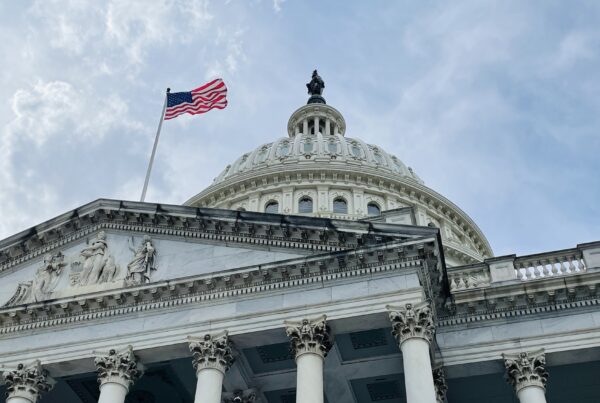We are now in the 4th quarter and looking forward to the year end close process, it is important to note there is a new accounting standard applicable for entities that have finance and operating leases. The Financial Accounting Standards Board, FASB, issued Accounting Standards Update No- 2016-02 Leases (Topic 842), which is effective for companies with fiscal years beginning after December 15, 2021. The biggest impact will be felt by lessees, however, there are some changes applicable for lessors. Let’s go through an overview of the accounting concepts, the changes and what are the steps you should be taking now.
Overview:
What is a lease? – A lease is a contract that conveys the right to use an asset to receive economic benefit and provide decision making over such asset.
What is the difference between a financing lease and an operating lease? – A financing lease (i.) transfers ownership over an asset from the lessor to the lessee by the end of the lease term, (ii.) the lessee has the option to purchase the underlying asset at a reasonable price, (iii.) lease term is for a substantial period of the asset’s useful life (iv.) there is no alternative use of the asset and (v.) the present value of the minimum lease payment exceeds substantially all of the fair value of the underlying asset.
An operating lease is any other type of lease that does not fall under a finance lease.
What is an example of a finance lease? – A car/truck/equipment lease
What is an example of an operating lease? – A property/land lease or copier lease
New Lease Standard Changes:
If you are a “LESSEE”:
For both finance and operating leases, a lessee will be required to recognize an asset and liability derived from the lease. At the commencement date of the lease, an asset will be placed on the balance sheet as a “Right-To-Use” asset along with a corresponding “Lease Liability”. The lease liability is calculated at the present value of the lease payments. The right to use asset is equal to the lease liability adjusted for lease payment, incentives and initial direct costs. The discount rate of the lease is either the rate implicit in the lease, the incremental borrowing rate, or if the accounting election is made, the risk-free discount rate. The lease term extends through all noncancellable periods, plus the reasonably certain options to extend.
Under a finance lease, a lessee will recognize interest expense and amortization expense of the right to use asset.
Under an operating lease, the lessee will recognize straight line lease expense equal to lease payments plus any direct costs over the term of the lease. The reduction in the right to use asset is the difference between the straight-line lease expense and the interest portion of your cash payment.
*If a lease term is 12 months or less and does not have an option to purchase, the lessee can elect not to recognize the right to use asset and lease liability.
Presentation:
|
New Lease Standard Balance Sheet |
||||||||
| Capital and Operating Leases | ||||||||
| Assets | ||||||||
| Right to use asset- Equipment lease | X,XXX,XXX | |||||||
| Valued at lease liability adjusted for direct costs | ||||||||
| Liabilities | ||||||||
| Equipment lease liability | X,XXX,XXX | |||||||
| Valued at present value of lease payments | ||||||||
|
|
||||||||
| Statement of Operations | ||||||||
| Capital Leases | ||||||||
| Other Expenses | ||||||||
| Interest Expense | XX,XXX | |||||||
| Amortization (Depreciation) | XX,XXX | |||||||
| Operating Leases | ||||||||
| Rent Expense | XX,XXX | |||||||
|
Old Lease Standard Balance Sheet |
||||||||
| Capital Leases | ||||||||
| Assets | ||||||||
| Equipment | X,XXX,XXX | |||||||
| Present Valued at total lease payments | ||||||||
| Liabilities | ||||||||
| Equipment lease liability | X,XXX,XXX | |||||||
| Valued at total lease payments | ||||||||
| Operating Leases Operating leases are not reported on the balance sheet only disclosed as a footnote within the financial statements. |
||||||||
| Statement of Operations | ||||||||
| Capital Leases | ||||||||
| Other Expenses | ||||||||
| Interest Expense | XX,XXX | |||||||
| Amortization (Depreciation) | XX,XXX | |||||||
| Operating Leases | ||||||||
| Other Expenses | XX,XXX | |||||||
| Rent Expense | XX,XXX | |||||||
If you are a “LESSOR”:
There have not been many changes in the lease standard for property lessors. In real estate, a tenant’s lease on the lessor side does not fall under the lease accounting standard. It is important to note, common area maintenance (CAM) charges and other revenue from tenants fall under revenue recognition topic 606.
For both tax and GAAP purposes, initial direct costs are capitalized and amortized over the term of the lease. Direct costs can include but are not limited to commissions and payments made to existing tenants to incentivize those tenants to terminate their lease.
Indirect costs are not capitalized for GAAP purposes. Indirect costs are costs to negotiate or arrange the lease that would have been incurred regardless of whether the lease was obtained. These include advertising costs, legal costs or tax consulting costs. For tax purposes, these costs are capitalized resulting in a tax to GAAP difference.
Next Steps:
What should you do now to save time and money later?
- Gather and review your capital and finance leases including any related party leases
- Prepare a schedule of your lease terms
- Determine the lease costs, including any variance lease terms and direct lease costs
- Determine the interest rate – Either the implicit interest rate noted in the lease or determine the incremental borrowing rate or elect to use the risk-free rate
- Review your debt covenants and reach out to your lenders if you are concerned with debt coverage ratios with the new liability going to be placed on your books under the standard.
- Contact your WG advisor for any questions or concerns. We are happy to assist you in your lease process.





